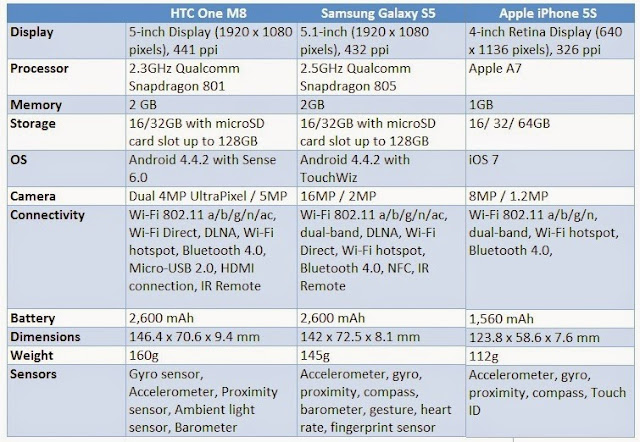Top 13 Image Editing Apps for Android
We use our Android phone for calling, texting, emailing, photography etc. Among all these, photography is the next most important purpose of Android phones.
We click pictures everywhere, in every mood, celebrations, holidays, etc. We keep our photos on our Android, share it with our friends on social media, frame them or even make collages. For all these things we should do some basic (or Advanced) editing to our photos to make it look perfect.
We are presenting a list of 13 Best Image Editing Apps for Android that you will love. The most interesting thing is that they all are free.
1. Pixlr Express – Photo Editing
Pixlr Express is one of the most popular and highly rated photo editing app for Android. You can do professional editing to your picture even if you are not a professional editor or even if you have never edited a photo before.
You can very easily crop, rotate or adjust images while saving or sharing it with someone. Pixlr is full is special effects with more than 600 creative special effects. There is a ‘Auto Fix’ option that automatically balances color, brightness and adjusts for poor lighting conditions.
There are various Overlays to adjust mood of the photo. Different types of lighting effects also added. You can add borders, different fonts, overlays, remove red-eye, draw sketch, layout, background etc.
Pixlr Express has social media integration. Share you photos directly with your friends on Facebook, Twitter or Google+
2. Cymera – Camera & Photo Editor
Cymera is a very good camera app for portraits. There are huge variety of lenses and shooting modes available to add beauty to your photo. More than 800 decoration options are offered with amazing collage effects to make your picture perfect.
Cymera has more than 20 hand-picked and carefully selected filters, 70 different makeup and hair items to help you complement your looks. You can create beautiful collage with Cymera. It has different collage layouts. There are many online collage making tools are also available.
3. PicsArt – Photo Editing
Everyone can become an artist using PicsArt. It is available for free at Google Play Store and has got several million downloads. Its drawing tool has got abundant features like various artistic brushes, layers to create mobile images look like real paintings. With DrawCam mode you can combine real-time photos with editing, drawing, layering etc.
With its social network, you can share your images and participate in photography, drawing, graphic design contests.
4. Photo Editor by Aviary
Aviary is a great brand in Photography. Photo Editor by Aviary is a free photo editing app for Android devices. You will get all your photo editing needs fulfilled with this. It provides an easy way to beautiful photos.
There are various features like one tap auto enhance, sharpen, blur, color splash, focus, drawing, adding text, etc. You can adjust brightness, contrast, saturation, colors etc. in your picture.
5. Photo Editor Pro
Photo Editor Pro is a powerful image editing software from Zentertain. It offers various image editing features. You can adjust light, brightness, contrast, color etc. It offers all the basic image editing features provided by other apps in the list.
6. Adobe Photoshop Express
Adobe Photoshop is already very famous for editing images on computer. For basic editing you can straighten you photo, crop, resize and remove red eye. It has one touch auto image enhancement feature.
Photoshop Express has more than 20 eye-catching effects and filters. Share your photos with friends on Facebook, Twitter, Tumbler and Google+.
7. QuickPic
QuickPic is a bit different. It not only allow you to edit your picture but also manages them well. You can view slide show with best quality. Include or exclude specific folders for more efficient scanning.
You can crop, rotate, resize, shrink your photos. The app is optimized for Android HD tablets. The best thing is that it is free and has no ads. You can also play animated GIFs and standard videos.
8. Photography editor
Make funny and amusing photos of your friends with Photography Editor. You can change the original photo and fool your friend. There are a number of effects like snow effect, falling leaves effect, rain effect etc.
Choose and apply frame to your picture. Write over your image or drawing. Photography Editor is available for free.
9. Photo Effects Pro
Photo Effects Pro provides you an easy and fun way to enhance your photos. Its powerful editing tools add beauty to your image. There are over 40 amazing filters and effects to enhance looks.
Use your fingers to add funny stickers and badges to your picture. There are lovely frames you can rotate, move and zoom by fingers. This app enables to you to make beautiful collage of photos.
10.Snapseed
Snapseed makes photo editing a fun and enhances your picture beauty. It also offers one tap auto correct feature like many others in the list. Experiment with a variety of filters like Drama, Vintage, Tilt-Shift etc.
Share your creations with friends on social media network.
11. Photo Studio
It is an image editing app full of features. More than 150 unique filters in different categories, 100+ special effects, 500 stickers in different categories etc. Magic tools like auto levels, area-auto-levels, lens boost, add text to image, adjust brightness & contrast and many such things.
12. Photo Grid – Collage Maker
With Photo Grid, you can make instant and beautiful collages very easily. There are variety of layouts for photo grids, wallpapers, photo walls, albums and collages. Its editors allows you to move, swap, rotate, zoom, sketch, etc in the photo lab.
13. Photo Editor For Android
It is a free and simple image editor for Android. You can do all the basic image editing easily. Fill effects, blur, sharpen, straighten, control brightness and a lot such things with Photo Editor for Android app.










